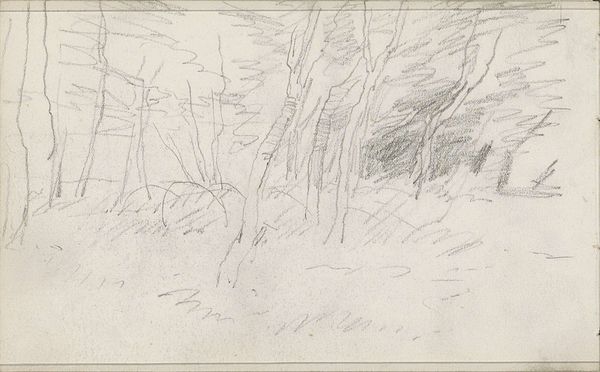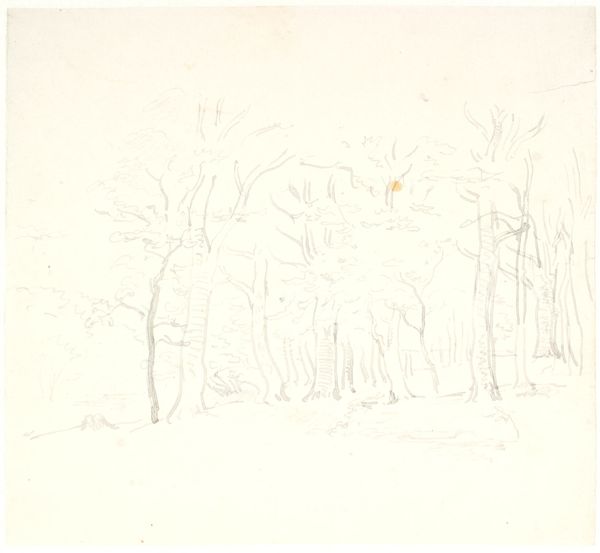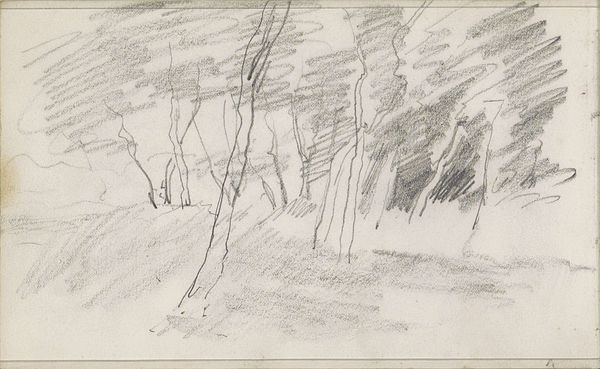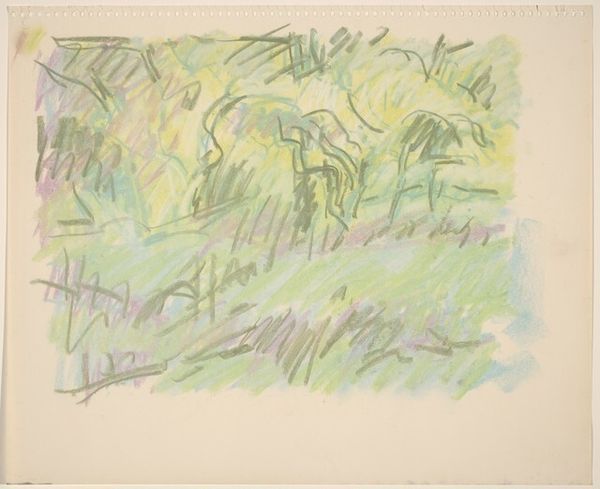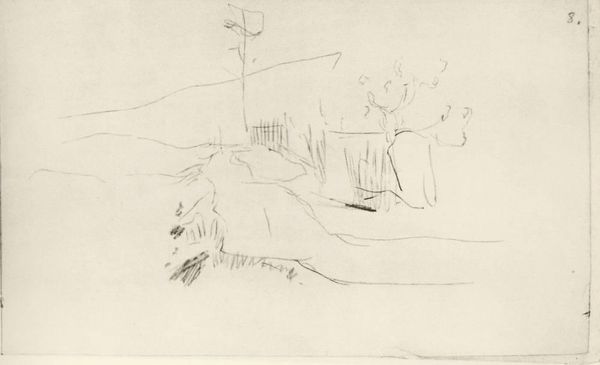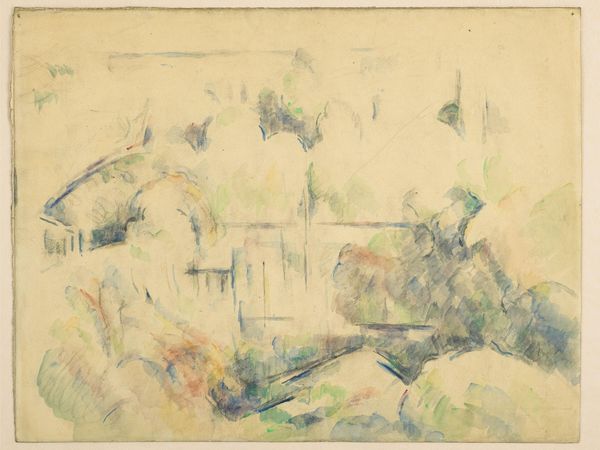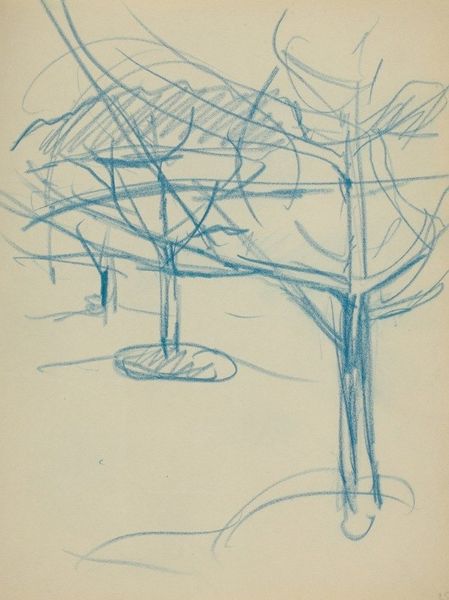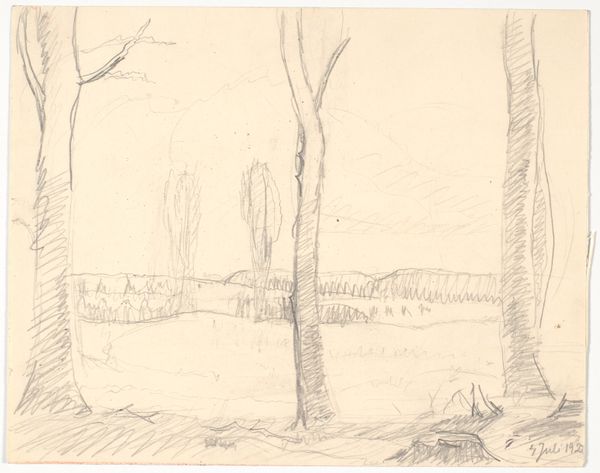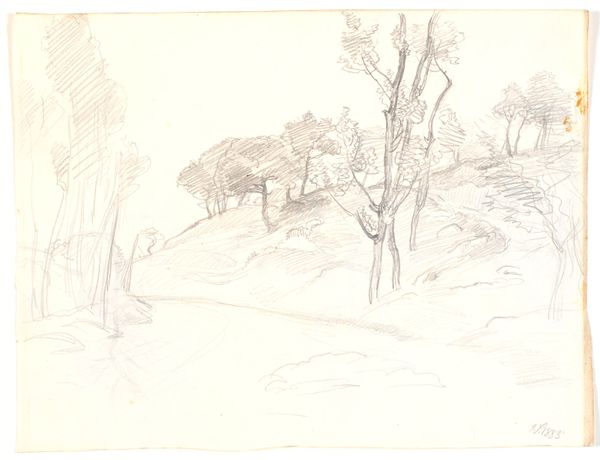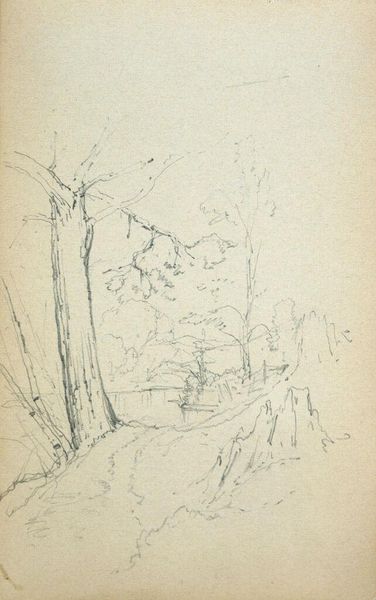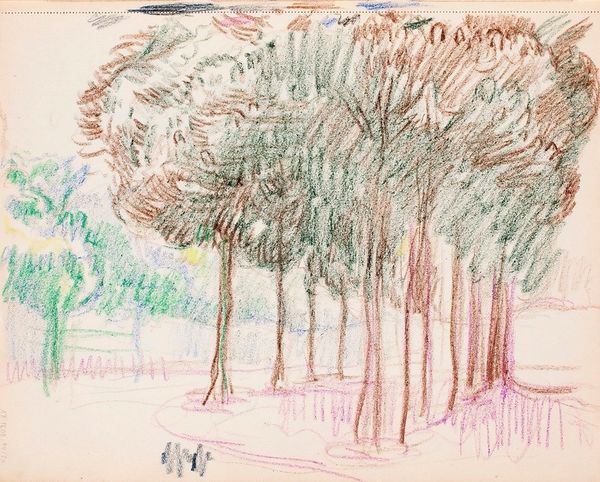
drawing
#
drawing
#
amateur sketch
#
light pencil work
#
incomplete sketchy
#
personal sketchbook
#
ink drawing experimentation
#
sketchbook drawing
#
watercolour bleed
#
sketchbook art
#
watercolor
#
initial sketch
Copyright: Public Domain: Artvee
Curator: Before us is Berthe Morisot's "Spring Landscape," a drawing likely created between 1890 and 1891. What are your initial thoughts on this piece? Editor: The first thing that strikes me is its delicate, almost fleeting quality. It feels incredibly personal, like a momentary capture of a scene. I can almost feel the artist lightly touching the paper. Curator: Precisely! Look at the layered strokes of blue, yellow and orange—it's a dance of colour defining the space. The composition, though seemingly simple, employs a subtle yet effective structural framework that guides the eye through the landscape. Editor: And you can clearly see the paper’s weave right through the sketch. I'm intrigued by the visible process here, the materiality of the pastel and pencil laid bare. It really does feel like we’re peering into the artist's sketchbook, observing the development of an idea. This, I think, pulls the viewer in – makes it more tactile. Curator: Note the tension created between the implied depth and the flatness of the page. Morisot challenges conventional perspective, opting instead for a planar arrangement that prioritises surface and pattern. This creates a distinctly modern visual experience. Editor: The quickness of the execution certainly gives insight into Morisot's artistic labor. This was a study, I expect, with clear ties to impressionistic painting practices en plein air. It’s the evidence of an artist working through materials in an outdoor context. Curator: An informed assertion. Its incompleteness isn't a deficiency but, rather, a key element of its aesthetic strength. By revealing the process of creation, Morisot invites us to engage actively with the work, completing it in our own minds. Editor: For me, seeing the watercolour bleed and those tentative lines also emphasises its place within a specific, material set of actions; choosing materials, going outside, making marks - actions firmly embedded in a physical and economic reality. It moves us beyond just pure aesthetics. Curator: Absolutely. A reminder that art objects are not just aesthetic constructions but tangible artifacts borne from the intersection of concept and corporeal enactment. Editor: Yes, considering both, it's clear how much a 'simple sketch' can tell us! Curator: A fine observation on a remarkable drawing.
Comments
No comments
Be the first to comment and join the conversation on the ultimate creative platform.

